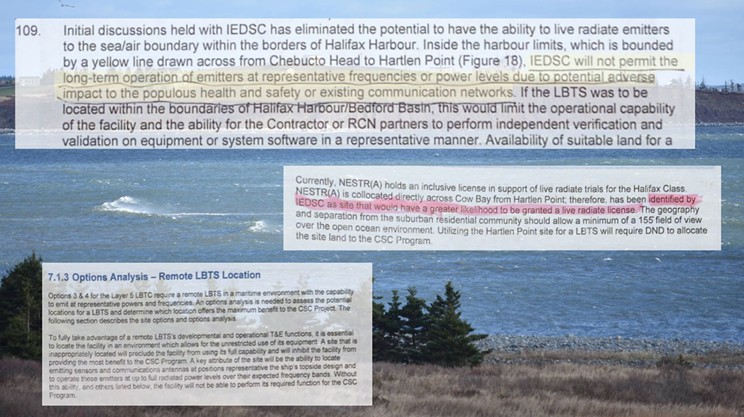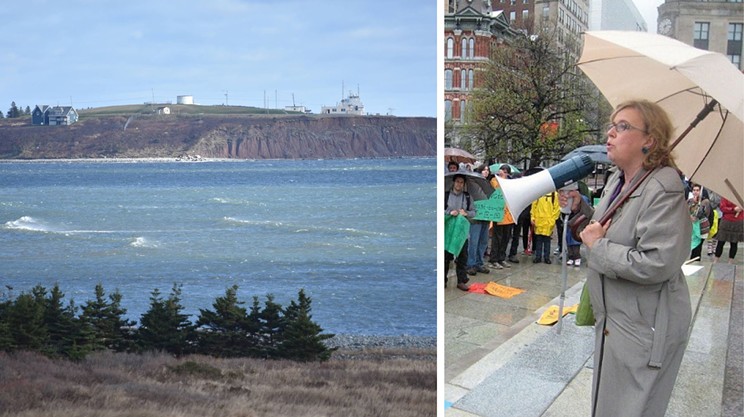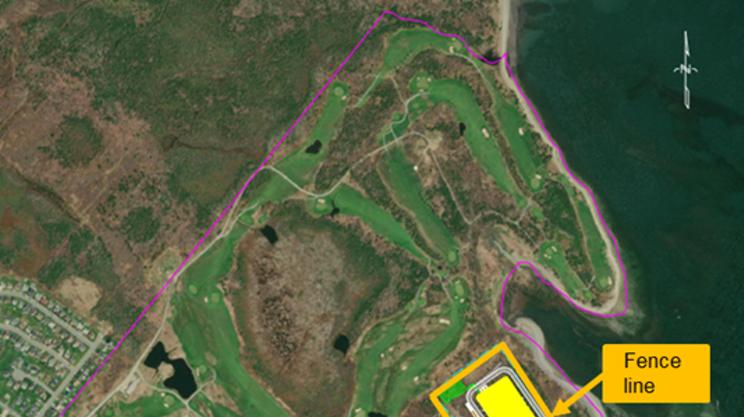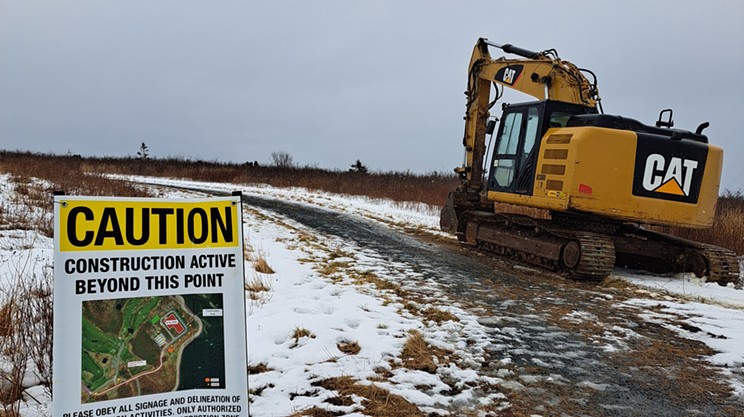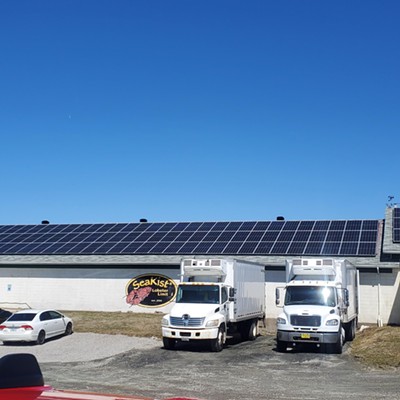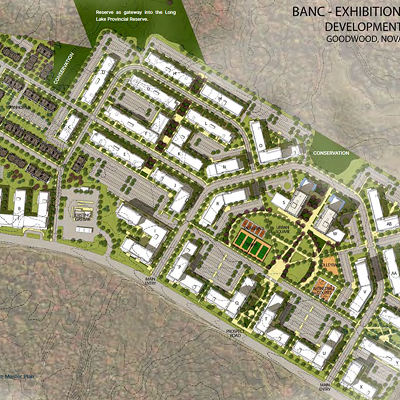If Tuesday night’s public forum on the Department of National Defense’s plans for the future of Hartlen Point established anything, it’s how wide the gulf remains between those determined to build a land-based warship testing site near Eastern Passage and those who want it moved anywhere else.
For more than two and a half hours on the evening of Jan. 31, the DND met with—and fielded questions from—an audience of 80-plus community members gathered despite the day’s snow storm at the Hartlen Point Golf Course, and more who attended the information session online. It was the first public engagement session the DND has hosted about Hartlen Point since March 2022. And while the Canadian military’s message was one of mitigation—the DND promised, in building a $129-million site that would test its warship fleet’s systems, that the safety of its neighbours was “paramount”—the tenor of the room was much the opposite.
“This is a breakdown of democratic function. The cart’s before the horse,” attendee Colleen Tierney said, to applause from the room. Tierney asked—as others did—what actions the DND’s decision-makers would take to account for the concerns raised within the room. “I need to know what actions are feasible—otherwise, this is just a performance piece.”
DND promises due diligence, says it ‘won’t deviate’ from safety protocols
At the heart of the DND’s plans—and Tierney’s concerns—is an eventual 11,500-square-metre facility, deemed “critical” in preparing the Royal Canadian Navy’s future warship fleet’s “combat systems” through “rigorous tests and trials.” The warships in question are 15 soon-to-be-built Canadian Surface Combatant ships, which Ottawa has described as Canada’s “major surface component of maritime combat power.”

Part of the “tests and trials” that the DND says it needs requires that any future site can accommodate the high-powered radio frequencies required for testing the ships at their full capacity. But here’s the rub: Canada’s body overseeing science and economic development—Innovation, Science and Economic Development Canada, or ISED—doesn’t allow for those frequencies within Halifax’s harbour. A private site-selection document prepared by Irving reveals that the range of frequencies are banned “due to potential adverse impact to the populous health and safety.” Which brings us to Hartlen Point, which falls just beyond ISED’s radiofrequency exclusion zone.
On Tuesday night, the Canadian Surface Combatant’s deputy project manager and naval captain Jay Thor Turner assured those gathered that the DND would be following “stringent safety procedures” set forth by Health Canada’s radiofrequency exposure guidelines.
“We don't deviate from this in how we operate with radiofrequency emitters today,” Turner said. “We have no plans to deviate. It would be illegal for us to deviate. And we won't deviate.”
That offered cold comfort to some residents, who questioned the DND’s claims that its eventual land-based testing site wouldn’t pose a threat to migratory birds, or who raised concerns about the project’s effect on nearby wetlands, or who wondered why the DND hadn’t considered other sites beyond the five in its initial site-selection report.
“You guys would hate if it was your backyard,” one attendee who’d grown visibly frustrated shouted, before storming out. “I live 100 metres away from here, for Jesus’ sake. Wake up.”
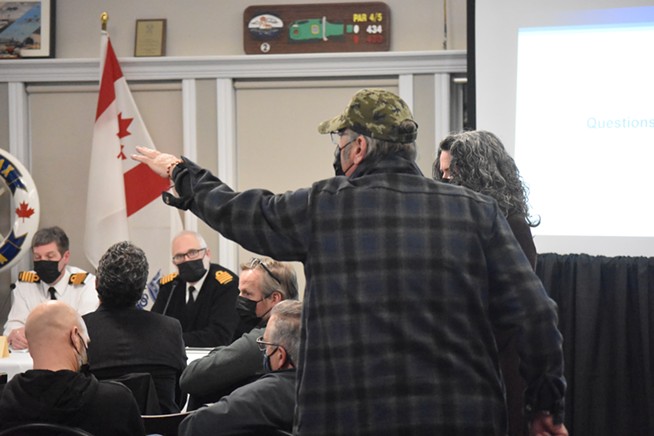
Neighbours voice concerns about traffic, potential environmental effects
The most recurring question of the night was why, in the face of public opposition, the DND has its sights trained on Hartlen Point instead of somewhere else. At the southernmost tip of Eastern Passage, the windswept and dune-covered outcrop is one of the most biodiverse bird habitats in all of Canada—home to more than 300 bird species, eight of which the DND conceded Tuesday as being at risk. Thirty-eight more species are deemed a “conservation concern.” Just offshore sits one of the busiest, most lucrative lobster fishing areas in all of the Maritimes. And the opposition has been vocal: A grassroots petition to move the proposed land-based testing site has garnered more than 17,500 signatures in the past eight months.
Turner told those gathered that there were several “key factors” that led to Hartlen Point’s selection over other sites in the HRM, the foremost being its height above sea level—which Turner called “essential” for the DND’s planned radar testing—and its proximity to the coastline.
The DND’s director of construction and project delivery, Paul Schauerte, added that the department “looked at a number of bird and bat habitats” at Hartlen Point, including the species’ migration and breeding patterns, to get a sense of the facility’s potential impact. While the DND “can’t entirely reduce the risk to zero” for birds and other animal species, Schauerte said, “the goal is to get it as close to zero as we can.”
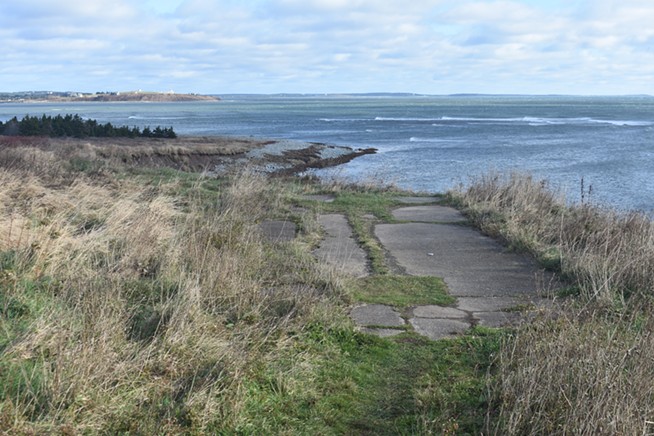
One community member, Dominic Cormier, wondered—if Hartlen Point was indeed the best location—why the DND hadn’t considered building over a part of the Canadian Forces 18-hole golf course, rather than disrupt the neighbouring dunes and wetlands.
“It wasn’t in our original sites that we looked at,” Turner replied. “We would have to go back and look at it again, which … we're not going to do.”
“We have certain parameters that we’re working within,” said Rob Chambers, the DND’s assistant deputy minister of infrastructure and environment. “I get that, for some of you, those parameters are unacceptable.”
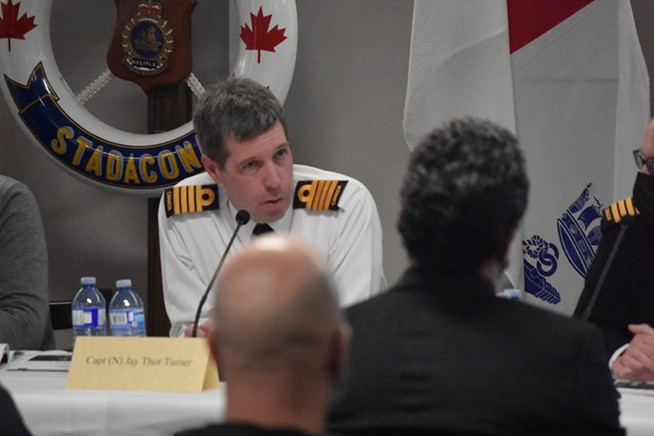
Hartlen Point resident Tony Rusinak would count himself among Chambers’ latter group. A member of the Protect Hartlen Point group, a self-described “community-organized movement to protect the thriving ecosystem of Hartlen Point and the surrounding community of Eastern Passage,” Rusinak has followed the DND’s updates with interest—and concern—since news of the project emerged in 2021.
He calls the DND’s latest updates “completely tone deaf” and against Canada’s purported message emerging from December’s UN Biodiversity Conference in Montreal. He’s also wary of how the proposed site has grown since it was first announced as a “small, fenced-in facility that nobody would notice”: Up to last night, the DND had described its planned facility as a 9,000-square-metre space. That’s changed to 11,500 square metres. In earlier estimates, the facility was also pegged at $65 million; that number has now been reported as high as $129 million.
“They’re not trying to minimize,” Rusinak tells The Coast. “It’s getting bigger.”
‘We weren’t meeting our obligations’ of public openness, DND deputy minister says
One of the core frustrations expressed Tuesday night was that the DND hadn’t been more forthcoming with its plans for a land-based testing site until after the CBC had first reported on it in June 2021. Before—and after—then, the Canadian military’s primary venue for project updates has come through the military newspaper Trident.
The DND filed an impact assessment registry about its plans in January 2021 and provided an online feedback portal, but lobster fisher Craig Hartlen told The Coast in November that he takes issue with how it was done. Opportunity for online feedback closed on Jan. 26, 2021. There were no door-to-door visits or flyers, and no public engagement sessions for 15 months.
“That's why no one commented, no one knew about it,” one resident, Marnie, said Tuesday night.
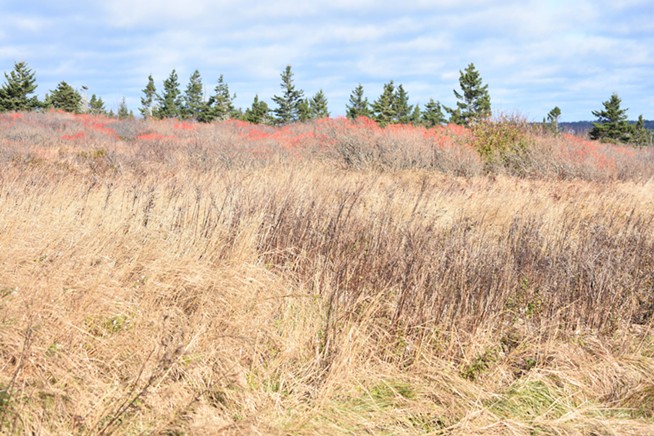
That message wasn’t lost on Rob Chambers, the DND’s assistant deputy minister of infrastructure and environment. He conceded that “there was a period” where “maybe we weren’t meeting our obligations” in terms of public outreach and engagement.
“Hopefully we’ve begun to correct that,” Chambers said.
The DND says it plans to start construction of its Hartlen Point site in “late 2023,” with the project aimed for completion by 2026.



